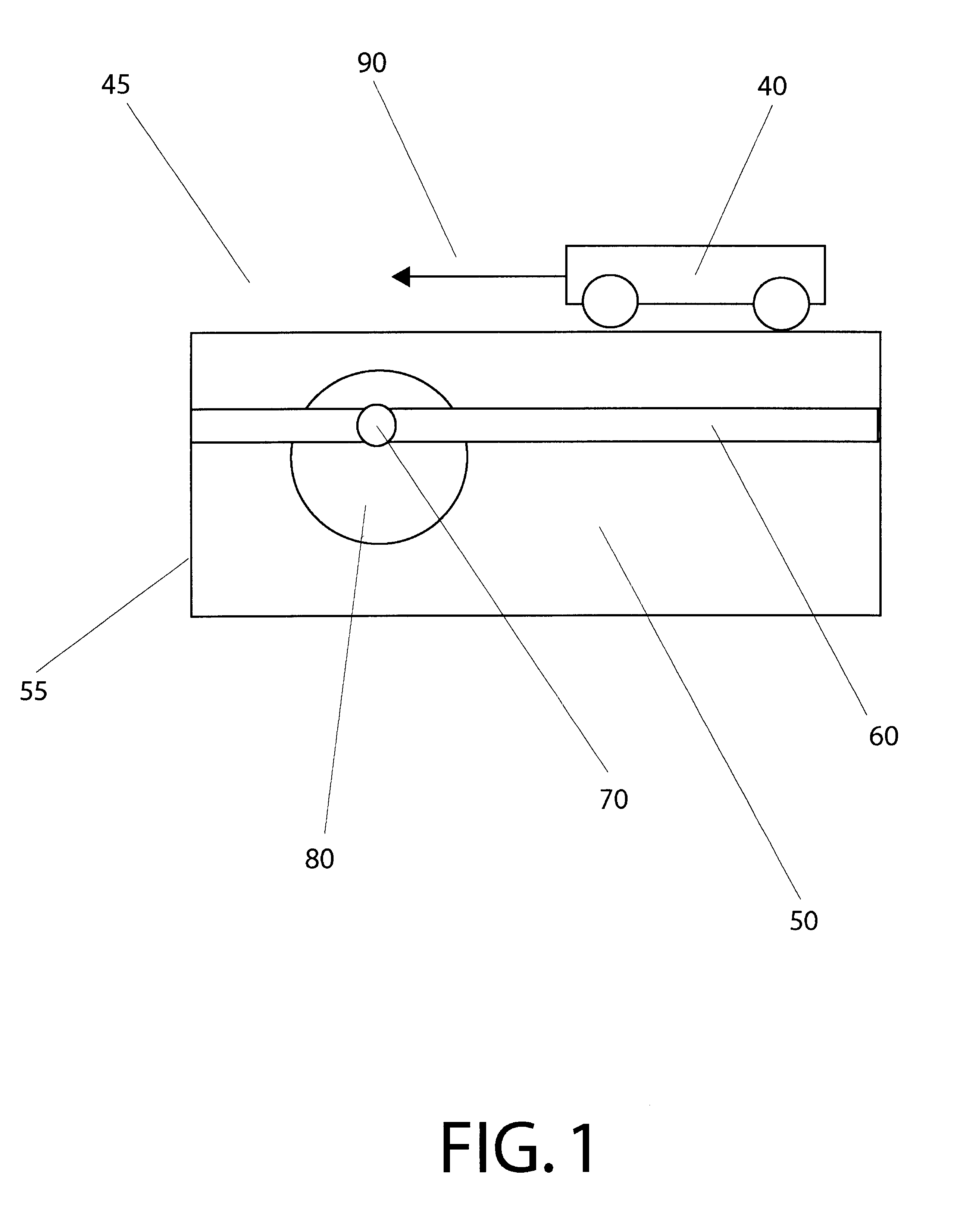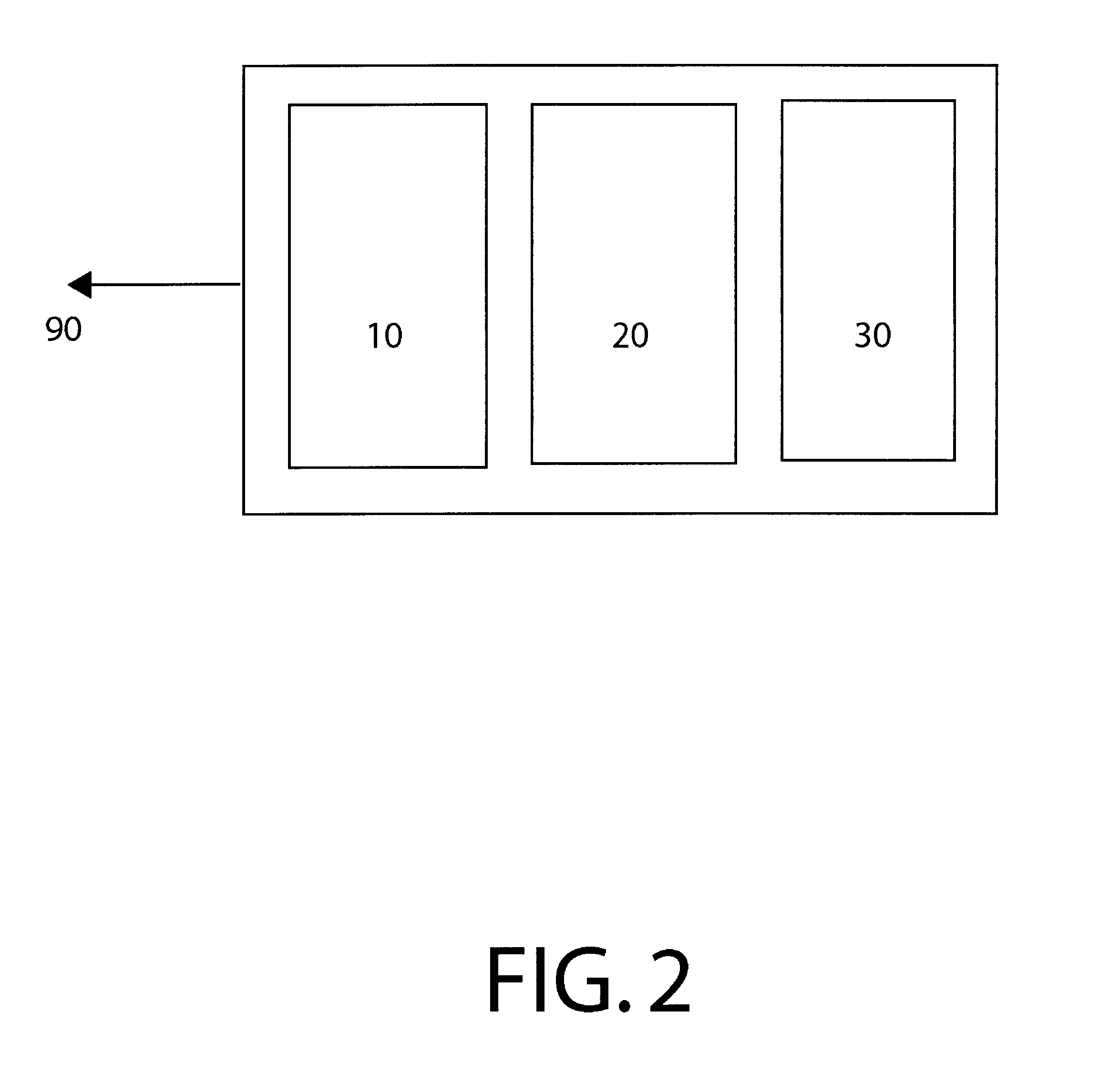Method and apparatus for detecting leaks in buried pipes by using a selected combination of geophysical instruments
a geophysical instrument and leak detection technology, applied in direction finders using radio waves, instruments, reradiation, etc., can solve the problems of not being able to transmit sound or vibration as efficiently, not having a reason in principle, and not having a clear and clear picture of the situation
- Summary
- Abstract
- Description
- Claims
- Application Information
AI Technical Summary
Problems solved by technology
Method used
Image
Examples
example 1
False Alarm With Induction Measurements Alone
In the first example, the use of induction measurements alone would result in an erroneous leak prediction. In particular, in this example an induction survey has revealed that a certain region near a water pipe has a higher conductivity than the surrounding areas. The soil in the high-conductivity region is dry clay (conductivity of 0.1 S / m and wave speed of 1.3.times.10.sup.8 m / s) and the soil in the surrounding area is dry sand (conductivity of 0.01 S / m and wave speed of 1.3.times.10.sup.8 m / s). (During excavation, soil that is removed from one hole is sometimes used to fill another hole, thereby creating soil pockets that are very different from the surrounding regions.) If only induction measurements were used, the high-conductivity region could erroneously be identified as wet soil, thereby causing a false leak prediction. However, a radar survey could determine that the high-conductivity region is not wet soil because the wave spee...
example 2
Missed Detection With Induction Measurements Alone
In the second example, the use of induction measurements alone would fail to detect an actual leak. In particular, assume that the soil near the leak is wet sand with a conductivity of 0.01 S / m and a wave speed of 5.5.times.10.sup.7 m / s. Assume also that the soil in the surrounding area is dry sand with a conductivity of 0.01 S / m and a wave speed of 1.3.times.10.sup.8 M / s. Since the conductivity of each region is the same, an inductive system would not be able to detect the leak. However, a radar system could detect the leak because of the decreased wave speed in the wet region.
example 3
Missed Detection With Radar Measurements Alone
In the third example, the use of radar measurements alone would fail to detect an actual leak. In particular, consider a water pipe that is buried at a depth of 3 meters in clay that has a conductivity of 0.1 S / m and a wave speed of 1.3.times.10.sup.8 m / s. Assume that the region near the leak is wet clay with a conductivity of 1 S / m and a wave speed=8.7.times.10.sup.7 m / s. In this case, the dry soil is highly conductive and the radar waves cannot penetrate deeply enough to reach the wet soil. Hence, radar cannot detect the leak. An inductive system, however, can penetrate deeply enough to detect the highly conductive wet-clay region, thus revealing the location of the leak.
As these examples illustrate, a leak detection system based on both radar and induction is more reliable than a system based solely on either radar or induction taken alone. Additional examples will be apparent to those of skill in the art from, for example, the soil-p...
PUM
 Login to View More
Login to View More Abstract
Description
Claims
Application Information
 Login to View More
Login to View More - R&D
- Intellectual Property
- Life Sciences
- Materials
- Tech Scout
- Unparalleled Data Quality
- Higher Quality Content
- 60% Fewer Hallucinations
Browse by: Latest US Patents, China's latest patents, Technical Efficacy Thesaurus, Application Domain, Technology Topic, Popular Technical Reports.
© 2025 PatSnap. All rights reserved.Legal|Privacy policy|Modern Slavery Act Transparency Statement|Sitemap|About US| Contact US: help@patsnap.com



